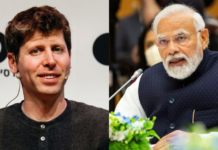Being smart is not about what you learn, but about how you process and apply new knowledge. Welcome to the age of context-awareness.
We are now two decades into the new century, so how have the CIOs gone? Will they feature prominently in the C-suit? Should they join their CEOs during board meetings updates? Are they the business leaders of The research firms that have been advising them for a long time? The result is a mixed bag.
On the one hand, the status of CIOs in the rarefied air of the executive business tower has not improved. Indeed, some might say it has weakened despite all that digital transformation impetus. Interestingly, the threat from the chief marketing officer (CMO) and a host of other, newer C-level titles never really materialized, but the CIO is still considered a second-tier corporate officer (along with the CMO and others). The CEO-COO-CFO trio still holds sway.
How is that possible in the age of information? Perhaps because the pressure of sophisticated bleeding edge projects, such as running 5 G networks and quantum computers, is imposed on CTOs. And maybe because CIOs are bogged down by security and reliability risks, making high-order objectives almost untenable.
This series of articles will research the process and technical aspects of improving the main capabilities of the IT function in such a way that CIOs can transcend their current mandate and widen their effects.
The context-aware era
The system was considered smart if it was able to take action or allow the operator to make a decision on the basis of its ability to aggregate and synthesize data. When an event, happening in any kind of environment, could be identified and digitized, it could provide useful intelligence. This is what business executives refer to as situational awareness (the technocratic prefer the term context-awareness).
Referring to the basic process diagram: raw data is acquired or sensed at input; then processed using neural network algorithms, resulting in a series of autonomous acts or reports that inform decision-making. Output is also fed back as another source of input changing how the process algorithm recognizes patterns, and effectively adjusts to current conditions.
It is the fundamental architecture of the learning system and can be extended to any pattern-recognition schema, be it facial, fingerprint, gait, voice, gesture, temperature , humidity, mechanical movement, flow, or light.
If automation was the theme of the industrial revolution, then certainly context-consciousness is the theme of the information age and the CIO is at the heart of it.
- Safeguard – maintain data integrity by storing it appropriately and activating effective access control.
- Measure – deploy the required sensory resources to capture all pertinent events.
- Analyze – devise and refine the algorithms that can effectively and efficiently identify consequential patterns.
- Tango – give the CEO freedom of expression by being a vigilant partner.
As seen in the chart above, four of the five activities listed are juxtaposed. Actions that need to be taken to keep information secure bring a sound approach to communication, while actions that allow collaboration should widen communication channels and speed up the transmission. Systems designed to capture as much data as possible need to run at low power in small, real-time bursts, whereas analytical systems use large amounts of power and have asynchronous components.
A talented CIO, who can keep these four activities in perfect equilibrium, will be the business partner a CEO needs.






